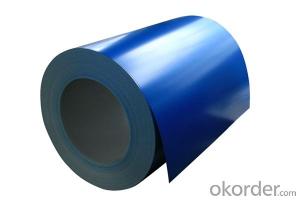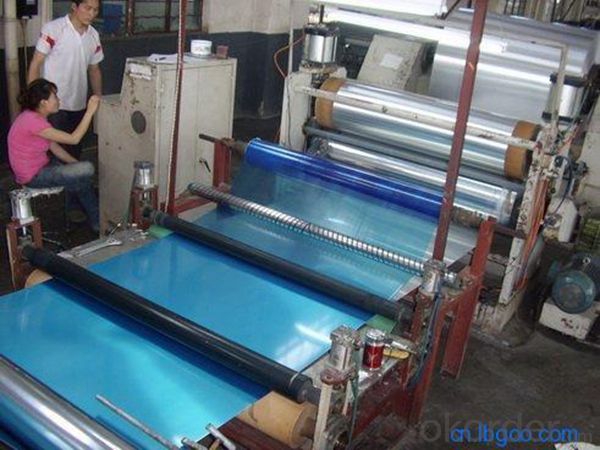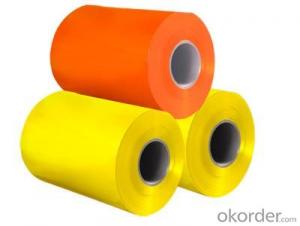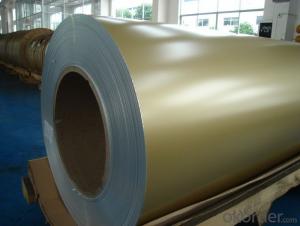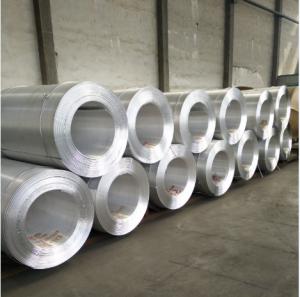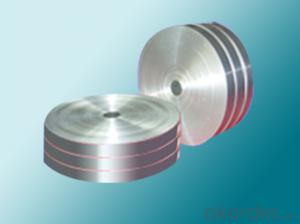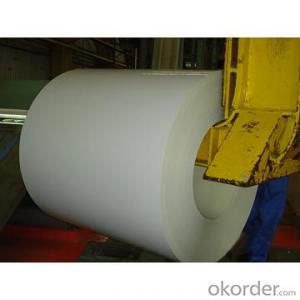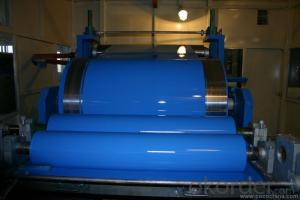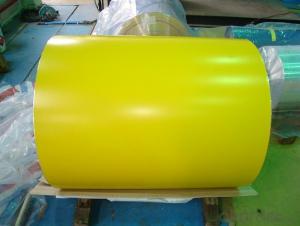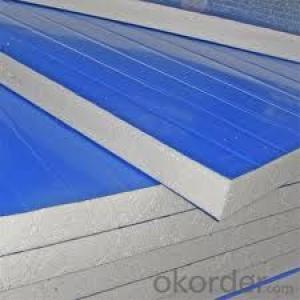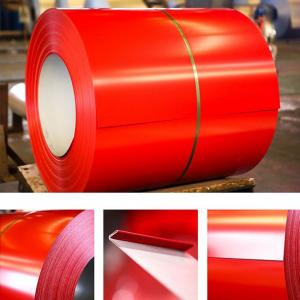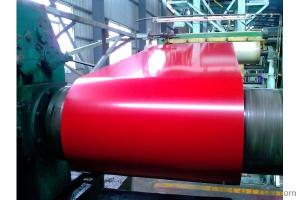Aluminum Coil Coating - PPGI Colorful Pre-Painted Galvalume Zinc Aluminum Coil
- Loading Port:
- Shanghai
- Payment Terms:
- TT OR LC
- Min Order Qty:
- 5 m.t.
- Supply Capability:
- 10000 m.t./month
OKorder Service Pledge
OKorder Financial Service
You Might Also Like
Specification
1. Specification of PPGI Colorful Pre-painted Galvalume Zinc Aluminum Coil Coating
characteristics | Application |
1) Super peeling strength | 1) Building exterior curtain walls |
2) Excellent surface flatness and smoothness | 2) Decoration and renovation additions for old buildings |
3) Superior weather, corrosion, pollutant resistance | 3) Decoration of interior walls, ceilings, bathrooms, kitchens and balconies |
4) Even coating, various colors | 4) Shop door decorations |
5) Fireproof, excellent heat and sound insulation | 5) Advertisement board display platforms and signboards |
6) Superior impact resistance | 6) Wallboards and ceilings for tunnels |
7) Lightweight and easy to process | 7) Industrial materials, materials for vehicles and boats |
2. Application of PPGI Colorful Pre-painted Galvalume Zinc Aluminum Coil Coating
(1).Interior: wall cladding, ceilings, bathrooms, kitchens and balconies, shutters, doors...
(2).Exterior: wall cladding, facades, roofing, canopies, tunnels,column covers , renovations...
(3).Advertisement: display platforms, signboards, fascia, shop fronts...
3. Feature of PPGI Colorful Pre-painted Galvalume Zinc Aluminum Coil Coating
*Such coil is specially designed to replace aluminum ingot, due to the high export tax of aluminum ingot, the coil has better price than ingot.
*This type of coil can fit customer's remelting furnace just like ingot, no need to make any change to the production line that was previously used for ingot. The standard coil size and weight is very suitable for the feed gate of furnace.
*This type of coil causes less material wastage than ingot when remelted.
*Our coil is made directly from ore, no need to go though the ingot making process, quality is much better than other suppliers who use ingot scrap to make coil.
Be free from Oil Stain, Dent, Inclusion, Scratches, Stain, Oxide Dicoloration, Breaks, Corrosion, Roll Marks, Dirt Streaks and other defect which will interfere with use
4. Certificate:
SGS and ROHS(if client request, paid by client), MTC(plant provided), Certificate of Origin(FORM A, FORM E, CO), Bureau Veritas and SGS (if client request, paid by client), CIQS certificate
5. Image of PPGI Colorful Pre-painted Galvalume Zinc Aluminum Coil Coating
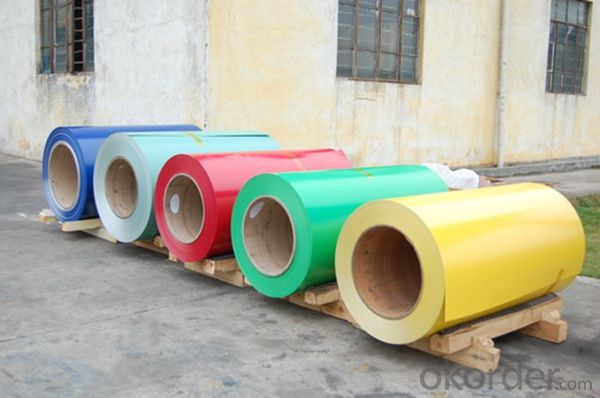
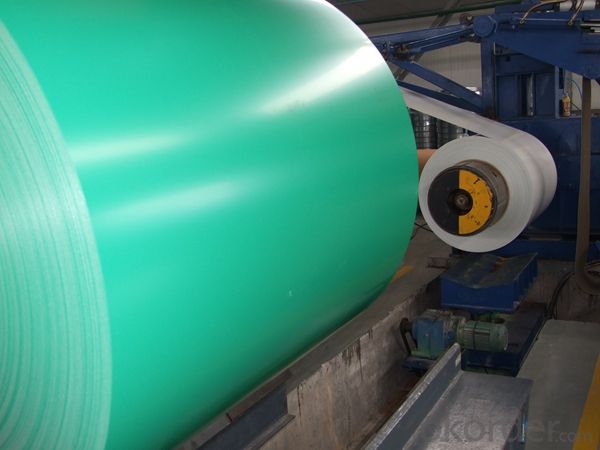
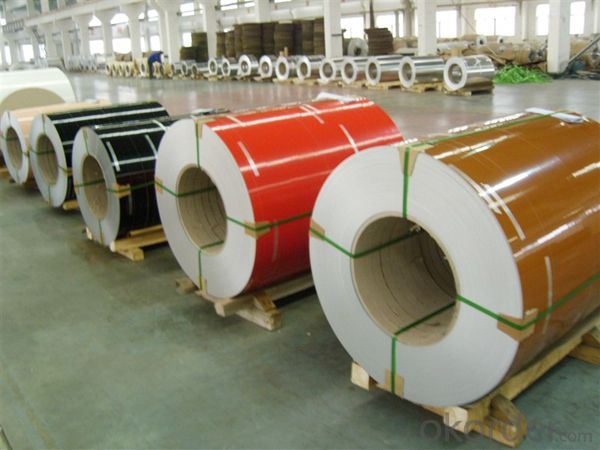
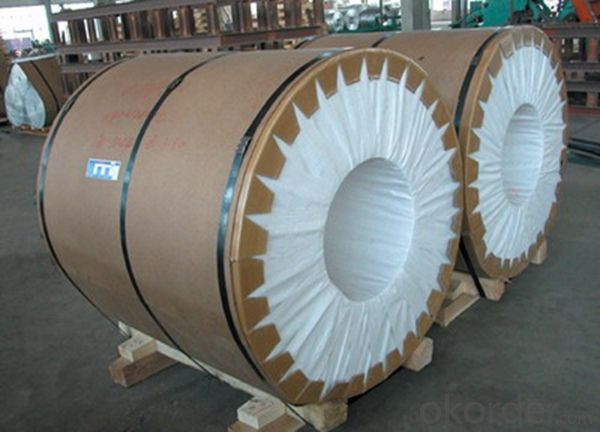
6. Package and shipping of PPGI Colorful Pre-painted Galvalume Zinc Aluminum Coil Coating
eye to wall
eye to the wall
with wood pallet (wooded case also available)
7. FAQ
1) What is the delivery time?
Dpends on actual order, around 20 to 35 days
2)What is the QC system:
We have QC staff of 20 persons and advanced equipment, each production is with MTC traced from Aluminum ingot lot.
3) What market do you mainly sell to?
Australia, America, Asia, Middle East, Western Europe, Africa etc
- Q: Aluminum is a transition metal, woudn't the stock naming system apply to this formula?
- Aluminium has only one oxidation state i.e +3. Hence it does not matter whether we call it aluminium (iii) oxide or simply aluminium oxide. However copmare iron oxide. Here it could be FeO or Fe2O3 so we have to distinguish by indicating Iron (II) Oxide for FeO and Iron (III) oxide for Fe2O3.
- Q: hello I'm building a TIG welder and have found the output from my stick welders to be not so good for aluminum(60 Hz on one). I've heard that high frequency AC is the way to do AL but am not sure what constitutes high. I do have a nice miller gas driven welder also that is maybe triple the frequency of my line driven one but still had issues with it. does anyone know of an actual # ? I may be able to build an inverting PWM supply eventually to do this but am not sure what I would need it to do. does anyone have any data that might help? any data/tips about aluminum would be appreciated, thanks in advance. FYI I do understand why AC works so much better on AL, what with the oxides that are always present.
- Best not to play around with jury-rigged equipment if you don't have to. The best option would be to simply buy a purpose-made Inverter power source for TIG. The high frequency is secondary to the main AC power, which is by default, 60 hz. In other words, the high frequency is simply added on top of the main AC current. A lot of inverter power supplies for TIG allow you to alter the MAIN power AC frequency to above or below 60 hz. This can be helpful as increasing the frequency produces a somewhat narrower arc. The high frequency is little more than highly amplified radio noise that is injected into the main power signal. It consists of a broad range of frequencies, usually in the range of kilohertz to megahertz. Beneficial features to look for in an inverter include high-frequency generator, square wave, AC wave balance, AC frequency adjustment, high frequency intensity adjustment, and a foot control. Pre-flow and post-flow controls can also be convenient if you expect to be doing mass production jobs. I consider other features, including pulsed TIG, to be mostly a waste of time and money. With respect to the previous poster, the high frequency DOES help with the cleaning action for welding aluminum.
- Q: Are aluminum coils suitable for coil slitting applications?
- Indeed, coil slitting applications find aluminum coils to be a fitting choice. Aluminum, being lightweight, adaptable, and resistant to corrosion, maintains its structural integrity even when sliced into narrow strips. Numerous industries, including automotive, construction, and packaging, rely on aluminum coils for their specific applications that demand precise and slim strips. Moreover, thanks to their exceptional formability and surface quality, aluminum coils prove themselves to be ideal for coil slitting procedures that mandate utmost precision and uniformity.
- Q: Are aluminum coils compatible with different welding methods?
- Yes, aluminum coils are compatible with different welding methods such as MIG (Metal Inert Gas) welding, TIG (Tungsten Inert Gas) welding, and even resistance spot welding. These methods can be used to join aluminum coils effectively and efficiently.
- Q: Can aluminum coils be painted or coated after installation?
- Yes, aluminum coils can be painted or coated after installation. Aluminum is a versatile material that can be easily painted or coated to enhance its appearance or provide additional protection. Painting or coating aluminum coils after installation can help prevent corrosion, improve durability, and provide a customized finish. The type of paint or coating used will depend on the specific requirements and desired outcome. It is important to ensure that the aluminum surface is properly cleaned and prepared before applying any paint or coating to ensure adhesion and longevity.
- Q: The company wants to produce an aluminum coil production line, which is better for large aluminium smelting equipment?
- Dongpu heat well, they have the qualification certificate issued by the state kiln construction, as far as I know, their melting furnace Aluminum Alloy 'plan is very good, and the operation is simple and safe, feel good, can be wiped off
- Q: Are aluminum coils available in different colors?
- Yes, aluminum coils are available in different colors. The process of coloring aluminum coils involves coating the surface with a durable finish that can be in various colors. This coating is typically achieved through a process called coil coating, where the aluminum coil is cleaned, pre-treated, and then coated with a layer of paint or other colored material. This allows for a wide range of colors to be applied to the aluminum coils, providing flexibility in design and aesthetic options for various applications.
- Q: Are aluminum coils suitable for interior design applications?
- Aluminum coils are indeed a fitting choice for interior design purposes. The versatility of aluminum as a material presents a multitude of advantages for interior design endeavors. To begin with, aluminum possesses a lightweight nature, ensuring ease of handling and installation. This quality proves particularly advantageous for projects necessitating extensive installations or suspended ceilings. Moreover, aluminum coils exhibit exceptional durability and corrosion resistance, guaranteeing extended lifespan and suitability for high-traffic regions. Furthermore, aluminum can be effortlessly tailored and molded to meet specific design requirements, thereby offering limitless design possibilities. Additionally, the material is available in a plethora of finishes, including brushed, polished, or anodized options, which can significantly enhance the aesthetic allure of any interior space. Furthermore, aluminum emerges as a sustainable and eco-friendly alternative, given its easy recyclability and low carbon footprint relative to other materials. All in all, aluminum coils represent a pragmatic and visually pleasing choice for interior design applications.
- Q: How do aluminum coils perform in corrosive environments?
- Aluminum coils perform exceptionally well in corrosive environments due to their natural resistance to corrosion. The formation of a thin, protective oxide layer on the surface of aluminum coils helps prevent further corrosion from occurring. This property makes them highly suitable for applications exposed to moisture, chemicals, and other corrosive agents.
- Q: How do aluminum coils contribute to the durability of structures?
- Due to its unique properties and characteristics, aluminum coils greatly enhance the durability of structures. A key factor is aluminum's exceptional resistance to corrosion, unlike other metals that rust or corrode when exposed to moisture or harsh environmental conditions. This corrosion resistance ensures that the building maintains its structural integrity over time, reducing the need for frequent repairs or replacements. Moreover, aluminum coils possess an excellent strength-to-weight ratio, making them a preferred choice in construction. They are lightweight yet strong, providing a high level of structural stability without adding unnecessary weight to the overall structure. This is especially advantageous in earthquake-prone areas or extreme weather conditions, as it allows the building to withstand external forces while minimizing the risk of collapse. Furthermore, aluminum coils are highly malleable, allowing them to be easily shaped and formed into various designs and structures. This flexibility empowers architects and engineers to create innovative and complex designs, giving architects the freedom to explore creative possibilities while ensuring structural integrity. The ability to mold aluminum into different shapes and sizes also increases the efficiency of construction processes, reducing the time and costs associated with building projects. Additionally, aluminum coils are known for their high thermal conductivity, surpassing other commonly used metals in construction. This property enables better heat transfer, resulting in improved energy efficiency and insulation within the structure. By effectively regulating temperature fluctuations, aluminum coils contribute to lower energy consumption, reduced heating and cooling costs, and ultimately, enhanced sustainability of the building. In conclusion, aluminum coils play a crucial role in enhancing the durability of structures. Their corrosion resistance, strength-to-weight ratio, malleability, and thermal conductivity all contribute to the longevity, stability, and energy efficiency of buildings, making them an ideal choice for construction purposes.
Send your message to us
Aluminum Coil Coating - PPGI Colorful Pre-Painted Galvalume Zinc Aluminum Coil
- Loading Port:
- Shanghai
- Payment Terms:
- TT OR LC
- Min Order Qty:
- 5 m.t.
- Supply Capability:
- 10000 m.t./month
OKorder Service Pledge
OKorder Financial Service
Similar products
Hot products
Hot Searches
Related keywords
